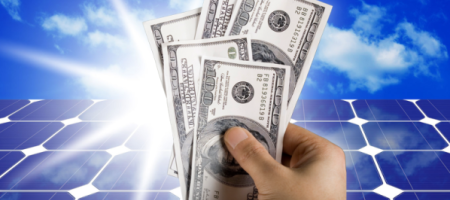With the dramatic decline in the price of solar panels, consumers now find solar to be an economical choice in an ever-increasing number of regional markets. The result has been a solar boom, especially in the residential sector, where the growth rate has been nothing short of explosive.
But despite this growth, residential solar is still in its nascent stages, with a penetration rate barely nudging 1%.
What will it require for residential solar to take its place at the table with other mature energy asset classes? One answer is compelling finance solutions, such as low-cost, easy-to-execute loans that require no down payment and offer consumers cost savings on electricity bills from Day 1. Such products have only recently been introduced in the residential solar financing market, but once their use becomes widespread, there will be nothing stopping the residential solar market.
Problems with PPAs and leases
The dominant financing products in today’s residential market are leases and power purchase agreements (PPAs). But these carry inherent drawbacks that are a legacy of their origin in the solar commercial and industrial space. The primary drawback is that the homeowner doesn’t own the system—it is owned by the leaseholder or the PPA provider.
Apart from Americans having a strong preference for ownership, the major liability of the lease/PPA model is that the leaseholder or PPA provider reaps the benefit of valuable state and federal financial incentives. One is SRECS, a state incentive that rewards producers of solar electricity, and another is the federal ITC for 30% of the upfront cost. Although the ITC for residential solar is due to reduce at the end of 2016, it has been, and remains, a powerful incentive.
Another major drawback of the lease and PPA models is that there is no opportunity for the homeowner to generate free electricity. Under these models, the homeowner just keeps on paying a monthly fee. Instead, through residential loans the homeowner owns the system free and clear once the term of the loan is up. Since solar systems are generally warrantied for 25 years and may have a lifespan of 30 years or more, this means the homeowner could ultimately benefit from years of free electricity.
Still another drawback is that the lease/PPA model adds nothing to the value of a home—in fact, it may even detract from it. The loan model makes a home more valuable—typically more valuable than the outstanding loan balance.
What makes a good residential solar loan?
So if loans are better than the competing financial products, why do leases and PPAs dominate the residential solar financing market? The reason is that there haven’t been a lot of good residential solar loan products around—ones that require no money down, are low-cost so consumers achieve significant savings on their electricity bills from Day 1 and are easy-to-execute with online or over-the-phone approvals in a matter of minutes.
Traditional solar loan products typically have terms of 10 to 12 years, which means monthly payments will often be higher than the monthly electricity bill from the utility—a price premium that demands a greater commitment to renewable energy than many homeowners are willing to make.
By contrast, longer-term loans translate to lower monthly payments, which means the cost of solar is lower than the cost of electricity from the utility from the very outset. SolarCity has blazed a trail with its MyPower loan, cast as a 30-year loan in the form of a PPA. Although very popular with consumers right now, SolarCity’s version of the loan doesn’t offer consumers what every loan product should provide: the promise of years of payment-free ownership of an energy asset on their roof. As loans with 15- to 25-year tenures become more widely available, homeowners will be able to enjoy the twin benefits of immediate utility bill savings and the promise of free energy down the road.
While leases and PPAs dominate today’s residential solar financing market, that can be expected to change with the introduction of better residential solar loans. When that happens, consumers will have the opportunity to adopt solar in ever-increasing numbers, and residential solar will be seated comfortably at the grownup table of energy service providers.
This article was written by Neil Z. Auerbach, CEO and Managing Partner of Hudson Clean Energy. It is published here with permission from the original publication on SolarPowerWorldOnline.















Comments